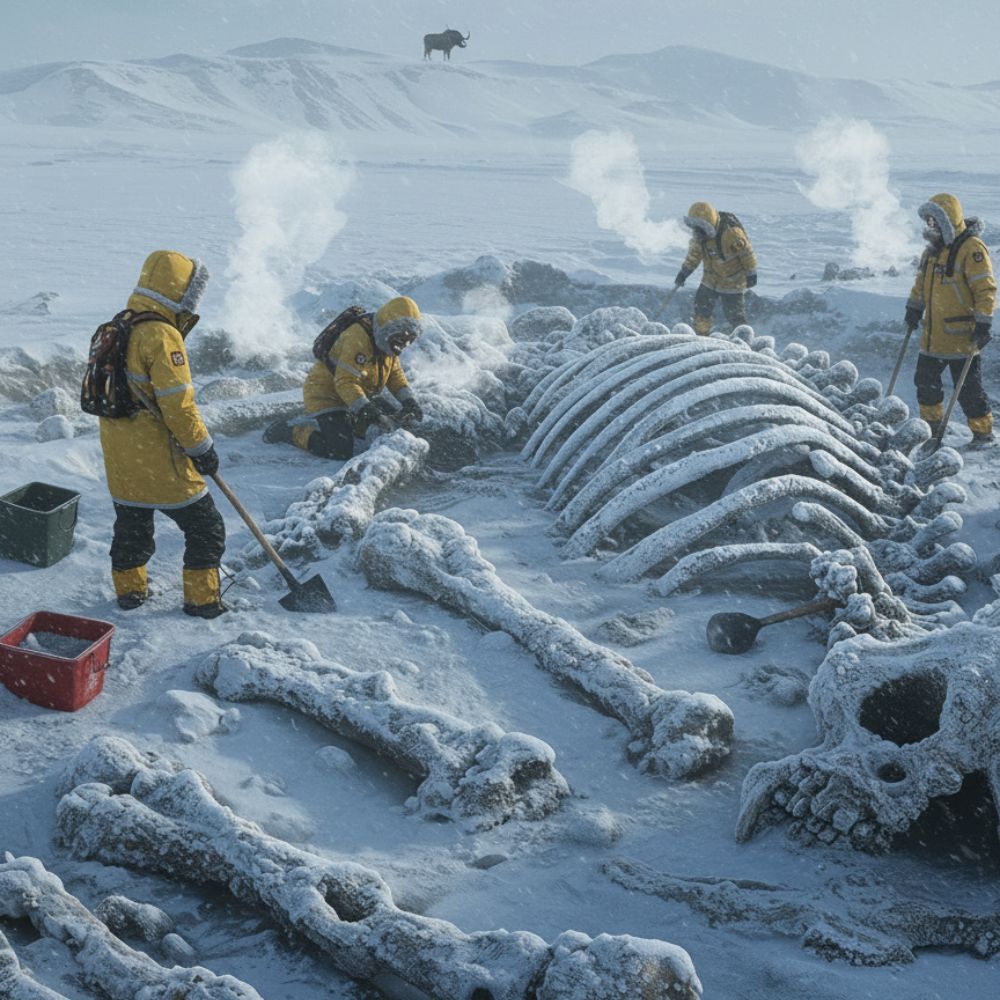Unearthing Giants: The Ellesmere Island Megafauna Discovery

The biting wind howled across the desolate plains of northern Ellesmere Island, carrying with it the sting of ice crystals. It was August 2042, and for Dr. Aris Thorne and his intrepid team, this remote Arctic expanse was more than just a frozen wasteland; it was a potential treasure trove of prehistoric life, locked away in the permafrost for millennia.
Their discovery had been a fluke, spotted by a high-resolution satellite during routine climate monitoring. A strange, linear anomaly in the ice melt pattern had piqued their interest, leading them to this windswept, unforgiving corner of the world. Now, bundled in their bright yellow insulated suits, the four-person team looked like beacons against the monochrome canvas of snow and sky.
“Temperatures dropping, Aris,” warned Lena Petrova, the team’s geochronologist, her voice crackling through the comms. “We’ve got maybe three more hours of good light.”
Aris nodded, his breath misting instantly. He knelt beside the exposed rib cage, its massive arch emerging from the frozen earth like a forgotten cathedral. This wasn’t just a skeleton; it was the skeleton, a creature of truly colossal proportions. They had spent weeks carefully thawing and chipping away at the permafrost, revealing more of its grandeur each day.
“Keep the heaters going, Lena,” Aris instructed, meticulously brushing away a layer of fine, icy sediment from a vertebral joint. “We need to preserve every detail.”
The low hum of the portable thermal units mingled with the rhythmic scrape of shovels. Maria Rodriguez, their lead paleontologist, worked with a focused intensity, using smaller tools to outline a limb bone as thick as a tree trunk. Across from her, Ben Carter, a seasoned field assistant, dug with a steady rhythm, steam rising from the ground where the heated probes had softened the soil.
“Could it be a new species, Aris?” Maria’s voice held a note of awe. “Nothing in the known record approaches this size for a terrestrial mammal in the Arctic, not even the largest mammoths.”
Aris paused, gazing at the sweeping expanse of bone. In the far distance, silhouetted against the pale sky, a lone musk ox grazed on the sparse tundra, a living relic of the Arctic’s hardiness. But this creature… this was something else. Its bones spoke of an age when the northern reaches of the world might have harbored giants unknown to science.
“It’s too early to tell, Maria,” he replied, a thrill of anticipation running through him despite the cold. “But whatever it is, this ‘Ellesmere Giant’ is rewriting our understanding of Pleistocene megafauna. Every bone, every fragment of preserved tissue, is a chapter in a story we’re only just beginning to read.”
The work was painstaking, physically demanding, and relentlessly cold. But with each bone they uncovered, with every piece of the ancient puzzle they laid bare, the team felt a profound connection to a past that defied imagination, a silent testament to the incredible history hidden beneath the ice of Ellesmere Island. They were not just archaeologists; they were time travelers, bringing a forgotten giant back into the light.
